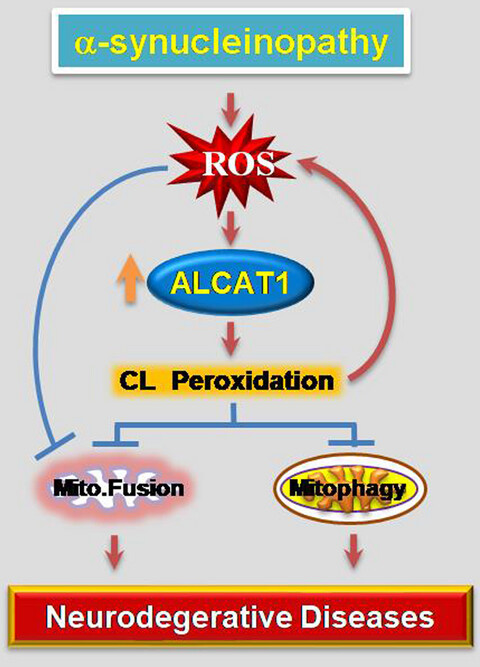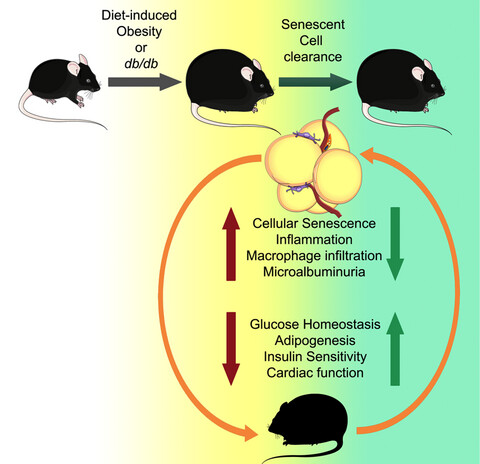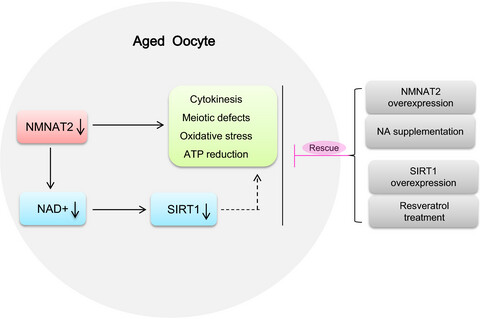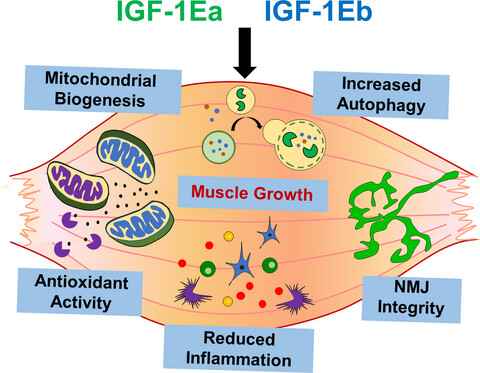Journal list menu
Export Citations
Download PDFs
ISSUE INFORMATION
REVIEWS
Accelerated bio-cognitive aging in Down syndrome: State of the art and possible deceleration strategies
- First Published: 15 February 2019
ORIGINAL PAPERS
JNK modifies neuronal metabolism to promote proteostasis and longevity
- First Published: 27 February 2019
The leptin sensitizer celastrol reduces age-associated obesity and modulates behavioral rhythms
- First Published: 01 March 2019
DAF-16 stabilizes the aging transcriptome and is activated in mid-aged Caenorhabditis elegans to cope with internal stress
- First Published: 17 February 2019
ORIGINAL ARTICLES
PKR knockout in the 5xFAD model of Alzheimer's disease reveals beneficial effects on spatial memory and brain lesions
- First Published: 01 March 2019
The p53/miRNAs/Ccna2 pathway serves as a novel regulator of cellular senescence: Complement of the canonical p53/p21 pathway
- First Published: 07 March 2019
ORIGINAL PAPERS
KIN-4/MAST kinase promotes PTEN-mediated longevity of Caenorhabditis elegans via binding through a PDZ domain
- First Published: 17 February 2019
Genetically heterogeneous mice exhibit a female survival advantage that is age- and site-specific: Results from a large multi-site study
- First Published: 23 February 2019
Increased intron retention is a post-transcriptional signature associated with progressive aging and Alzheimer’s disease
- First Published: 13 March 2019
Dynamin-like protein 1 cleavage by calpain in Alzheimer’s disease
- First Published: 14 February 2019
The exceptional longevity of the naked mole-rat may be explained by mitochondrial antioxidant defenses
- First Published: 15 February 2019
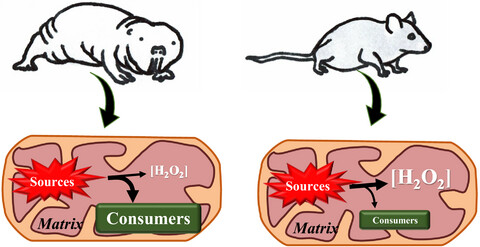
Reactive oxygen species (ROS) of mitochondrial origin are putatively involved in cellular senescence. The long-lived naked mole rat is similar in size to the common mouse, but lives >30 years instead of >3 years. We found that, as opposed to a long-standing hypothesis, this long-lived species is not characterized by lower rate of mitochondrial ROS formation. Instead detoxification of a key ROS species (H2O2) proceeds much faster in mitochondria of this species.
ORIGINAL ARTICLE
Hormone replacement therapy attenuates hearing loss: Mechanisms involving estrogen and the IGF-1 pathway
- First Published: 07 March 2019
ORIGINAL PAPERS
Endothelial toll-like receptor 4 maintains lung integrity via epigenetic suppression of p16INK4a
- First Published: 20 February 2019
The angiotensin-(1-7)/Mas receptor axis protects from endothelial cell senescence via klotho and Nrf2 activation
- First Published: 17 February 2019
Tau underlies synaptic and cognitive deficits for type 1, but not type 2 diabetes mouse models
- First Published: 27 February 2019
Nontuberculous mycobacterium M. avium infection predisposes aged mice to cardiac abnormalities and inflammation
- First Published: 04 March 2019
ORIGINAL ARTICLES
Elimination of senescent osteoclast progenitors has no effect on the age-associated loss of bone mass in mice
- First Published: 17 February 2019
Systems biology identifies preserved integrity but impaired metabolism of mitochondria due to a glycolytic defect in Alzheimer's disease neurons
- First Published: 21 February 2019
Caloric restriction controls stationary phase survival through Protein Kinase A (PKA) and cytosolic pH
- First Published: 20 February 2019
ORIGINAL PAPERS
Glycine supplementation extends lifespan of male and female mice
- First Published: 27 March 2019
Systemic clearance of p16INK4a-positive senescent cells mitigates age-associated intervertebral disc degeneration
- First Published: 21 March 2019
Aged-senescent cells contribute to impaired heart regeneration
- First Published: 10 March 2019
ORIGINAL ARTICLE
Short-term starvation stress at young adult stages enhances meiotic activity of germ cells to maintain spermatogenesis in aged male Caenorhabditis elegans
- First Published: 28 February 2019
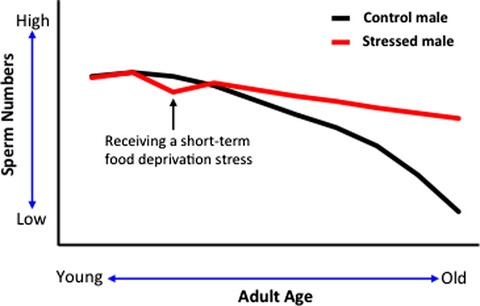
A short-term starvation (STS) treatment in young adult male Caenorhabditis elegans significantly improves their reproduction fitness when they are aged. STS stress preserves sperm number and quality in aged male worms, and the mechanism underlying requires anaphase-promoting complex/cyclosome (APC/C) activity crucial for meiotic division to produce sperms. STS-induced hormetic effects prevent the age-associated decline of FZY-1/CDC-20 expression, which in turn maintains APC/C activity from decline with age.
ORIGINAL PAPERS
Age-associated cholesterol reduction triggers brain insulin resistance by facilitating ligand-independent receptor activation and pathway desensitization
- First Published: 18 March 2019
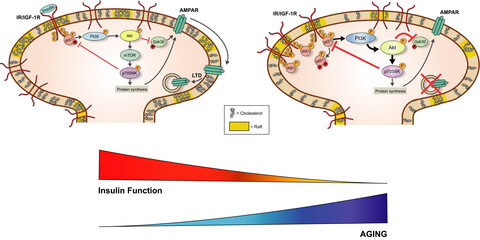
The loss of cholesterol from the plasma membrane of hippocampal neurons during aging causes changes in membrane fluidity affecting different signaling pathways. In particular, we observed a tonic insulin and IGF-1 receptor activation in the raft fractions of the membrane of old neurons, in a cholesterol loss-dependent manner. The sustained activity of receptor signaling leads little by little to final pathway desensitization, affecting insulin-dependent synaptic functions (insulin-LTD) and in the end optimal neuronal performance.
An early-senescence state in aged mesenchymal stromal cells contributes to hematopoietic stem and progenitor cell clonogenic impairment through the activation of a pro-inflammatory program
- First Published: 03 March 2019

Aged mesenchymal stromal cells (MSC) display early senescence features including SA-β-Gal accumulation, DDR, and SASP activation. Through SASP, aged MSC impair the clonogenic potential of hematopoietic stem and progenitor cells (HSPC) and induce the activation of a pro-inflammatory transcriptional program in young HSPC.
mTORC1 underlies age-related muscle fiber damage and loss by inducing oxidative stress and catabolism
- First Published: 29 March 2019
ORIGINAL ARTICLES
Vascular smooth muscle cell-specific progerin expression in a mouse model of Hutchinson–Gilford progeria syndrome promotes arterial stiffness: Therapeutic effect of dietary nitrite
- First Published: 18 March 2019
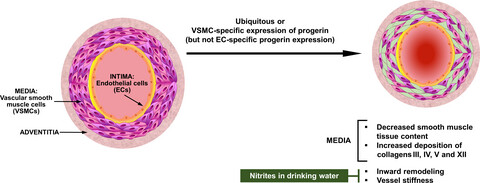
Ubiquitous progerin expression causes decreased smooth muscle tissue content and increased collagen deposition in the media associated with inward remodeling and vessel stiffness. These alterations are reproduced in mice expressing progerin in vascular smooth muscle cells but not in endothelial cells. Treatment with nitrites prevents progerin-induced inward remodeling and vessel stiffness.
NAD+ supplementation rejuvenates aged gut adult stem cells
- First Published: 27 March 2019
ORIGINAL PAPER
Tendinosis develops from age- and oxygen tension-dependent modulation of Rac1 activity
- First Published: 02 April 2019
ORIGINAL ARTICLE
KCNQ1OT1 promotes autophagy by regulating miR-200a/FOXO3/ATG7 pathway in cerebral ischemic stroke
- First Published: 03 April 2019
ORIGINAL PAPERS
Cardiolipin remodeling by ALCAT1 links mitochondrial dysfunction to Parkinson’s diseases
- First Published: 05 March 2019
IL-1α cleavage by inflammatory caspases of the noncanonical inflammasome controls the senescence-associated secretory phenotype
- First Published: 27 March 2019
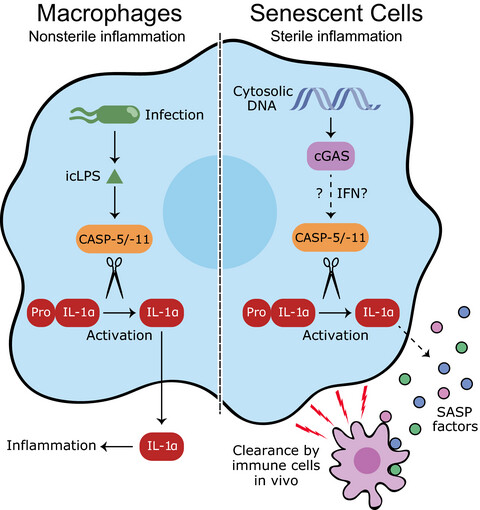
How the inflammatory cytokine IL-1α is activated is not well defined. Wiggins et al show that the inflammatory human caspase-5 and mouse caspase-11 directly cleave and activate pro-IL-1α. Intracellular LPS (icLPS) activates caspase-5/-11 in macrophages, leading to release of cleaved IL-1α. Importantly, caspase-5/-11-cleaved pro-IL-1α drives the senescence-associated secretory phenotype (SASP), leading to immune-mediated clearance of senescent cells in vivo.
Long-term caloric restriction ameliorates deleterious effects of aging on white and brown adipose tissue plasticity
- First Published: 28 March 2019
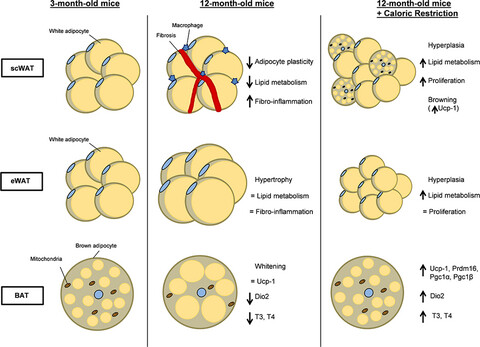
Impaired plasticity of subcutaneous white adipose tissue (scWAT) contributes to insulin resistance during aging, which is already evident in middle-aged mice. Alteration of thyroid axis status with age is an important factor contributing to BAT dysfunction in middle-aged animals. Defects in WAT and BAT/beige cells during aging are ameliorated by long-term caloric restriction (CR).
THIS ARTICLE HAS BEEN RETRACTED
RETRACTED: 1,25-Dihydroxyvitamin D exerts an antiaging role by activation of Nrf2-antioxidant signaling and inactivation of p16/p53-senescence signaling
- First Published: 24 March 2019
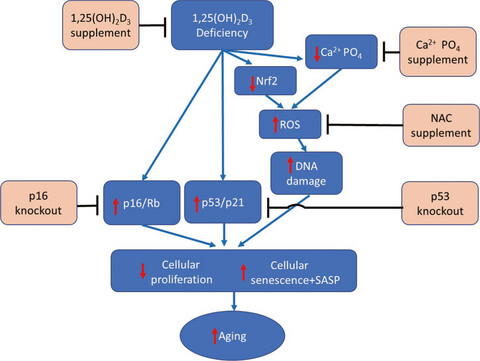
1,25(OH)2D3 deficiency results in increasing oxidative stress through inhibiting transcription of Nrf2 and enhancing DNA damage; in addition, activation of p16/Rb and p53/p21 signaling occurs. These events then lead to inhibition of cellular proliferation and induction of cellular senescence and SASP, and thus acceleration of aging. These processes may be rescued to different degrees and aging postponed by supplementation of exogenous 1,25(OH)2D3, calcium/phosphate alone or combined calcium/phosphate and antioxidant NAC, or knockdown of p53 or knockout of p16.
ORIGINAL ARTICLES
Targeting senescent cells alleviates obesity-induced metabolic dysfunction
- First Published: 25 March 2019
ORIGINAL PAPERS
NMNAT2-mediated NAD+ generation is essential for quality control of aged oocytes
- First Published: 25 March 2019
Effects of IGF-1 isoforms on muscle growth and sarcopenia
- First Published: 05 April 2019
SHORT TAKE
Tau overexpression impairs neuronal endocytosis by decreasing the GTPase dynamin 1 through the miR-132/MeCP2 pathway
- First Published: 27 February 2019
Pharmacological clearance of senescent cells improves survival and recovery in aged mice following acute myocardial infarction
- First Published: 28 March 2019
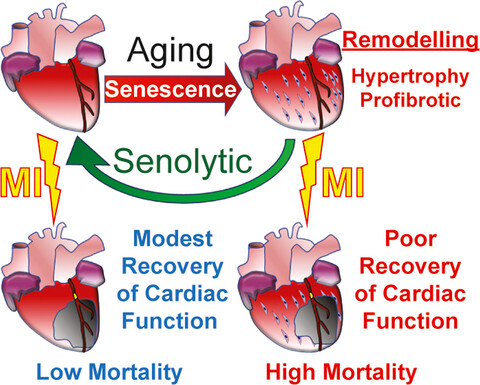
Aging and the accumulation of senescence promote adverse cardiac remodelling and fibrosis. In the event of a myocardial infarction (MI), aged mice demonstrate reduced cardiac function and high mortality. Treatment of aged mice with the senolytic navitoclax alleviated adverse myocardial remodelling, improved the maintenance of cardiac function and increased survival following MI.
Hyperadrenocorticism of calorie restriction contributes to its anti-inflammatory action in mice
- First Published: 01 April 2019
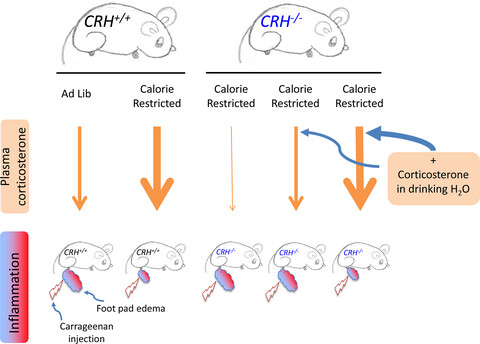
We tested the role of hyperadrenocorticism in the anti-inflammatory action of calorie restriction (CR), using a corticosterone (CORT)-deficient knockout (KO) mouse. The reduced inflammation of CR wild-type (WT) mice was blocked in CR KO mice. Replacement of CORT in CR KO mice to the elevated levels of CR WT mice (but not to the lower levels of ad lib fed mice) rescued the anti-inflammatory action of CR—indicating that the hyperadrenocorticism of CR contributes to its anti-inflammatory action.
SLC1A5 glutamine transporter is a target of MYC and mediates reduced mTORC1 signaling and increased fatty acid oxidation in long-lived Myc hypomorphic mice
- First Published: 25 March 2019
Noncoding variations in Cyp24a1 gene are associated with Klotho-mediated aging phenotypes in different strains of mice
- First Published: 28 March 2019
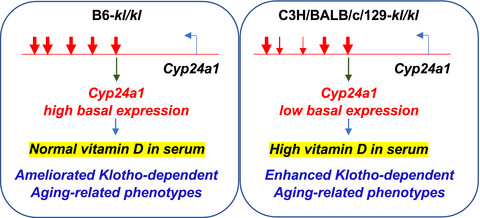
Genetic variations in the enhancer-like regions downstream of the Cyp24a1 gene regulate its basal expression in different strains of inbred mice. Deletions and substitutions in the putative Cyp24a1 regulatory sequences in susceptible C3H, BALB/c, and 129 mice lead to reduced basal expression of the gene, compared to resistant C57BL/6 mice, and render susceptible strains to the aging-related detrimental phenotypes with decreased Klotho expression.
COMMENTARY
Decoy fitness peaks, tumor suppression, and aging
- First Published: 08 March 2019
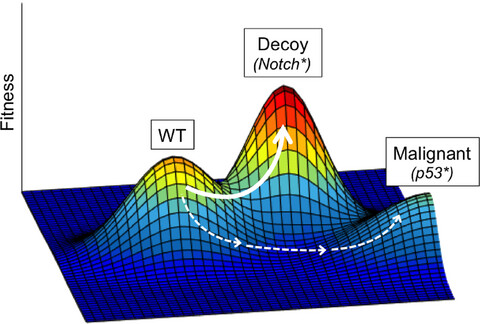
Recent reports by Martincorena et al and Yokoyama et al reveal unanticipated dynamics of somatic evolution in the esophageal epithelium, with clonal expansions apparently driven by mutations in Notch1 dominating the epithelium even in middle-aged individuals, far outpacing the prevalence of these mutations in esophageal cancers. We propose a model whereby the promotion of clonal expansions by mutations such as in Notch1 can limit more malignant somatic evolutionary trajectories until old ages.





